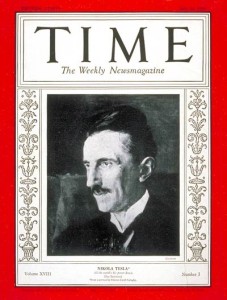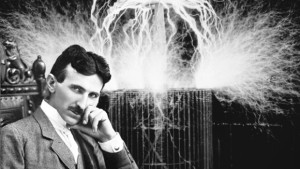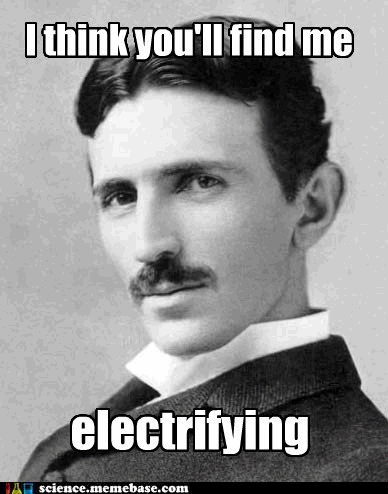Nikola Tesla: The Stereotypical Genius
 Last January marked the 70th anniversary of death of one of the most prolific, unusual and undeniably controversial technology scientists of the 20th century. His inventions and research make it possible for you to access this article using your computer and wifi. This scientist’s name is Nikola Tesla. To those who’d heard of Tesla before, this comes as no surprise. Many science enthusiasts are even annoyed by this perceived Tesla-worshipping that comes up once in a while. However, many have only a vague notion of who Tesla was and what his contributions to science and technology are. His name doesn’t roll of the tongue as easily as the names of people who used his research as a springboard for their own inventions.
Last January marked the 70th anniversary of death of one of the most prolific, unusual and undeniably controversial technology scientists of the 20th century. His inventions and research make it possible for you to access this article using your computer and wifi. This scientist’s name is Nikola Tesla. To those who’d heard of Tesla before, this comes as no surprise. Many science enthusiasts are even annoyed by this perceived Tesla-worshipping that comes up once in a while. However, many have only a vague notion of who Tesla was and what his contributions to science and technology are. His name doesn’t roll of the tongue as easily as the names of people who used his research as a springboard for their own inventions.
Truth be told, there’s hardly anything about Tesla that isn’t in some way controversial. Even the facts of his birth are freely interpreted. Although there is no denying that he was born into a Serbian family on July 10th 1856, he took great pride in his American citizenship (awarded in 1881); Croats and (to lesser extent) Austrians and Hungarians will still claim Tesla as their own since he was born in a village called Smiljan located in present day Croatia, that was at that time part of the Austro-Hungarian Empire.
Tesla started his career in a Budapest telephone company which he claimed to have improved and it was there where he first got the idea for a revolving magnetic field. His next employment would take him to Continental Edison Company in France and subsequently to Edison HQ in New York. This job only lasted for a year and the two became fierce rivals. Edison went as far as electrocuting animals in order to show how dangerous Tesla’s Alternating Current (AC) was – a type of current that is in general use today because it can be transmitted to incomparably greater distances than the Direct Current (DC) that is used in our homes.
Florescent light, laser beam, wireless communications and wireless transmission of electrical energy, remote control, Tesla’s turbines, Tesla coil and radio are some of his discoveries. However, not just a scientist and an inventor, Tesla was also a visionary and predicted solar and sea energy as well as satellites, which helps explain how so much of the technology that we use today can be traced back to his blueprints and theories. He paved the way for x-rays, computers, mobile phones and wireless technology.

Tesla was an unrivalled genius. Unfortunately (and perhaps inevitably), he was also very, very weird. He couldn’t stand women (especially their hair or jewellery), he reportedly had to calculate the volume of his spoon before he could swallow his soup and had a particular fondness for pigeons. He claimed to have a device that could fit into his pocket that could destroy a bridge or a building using waves and adored the idea of wireless transmission of electricity. There’s seems to be nothing straightforward about this man, just like his alternate current.
With more imagination than business sense, Tesla was rarely in the money, even though he sold his patents in order to improve his financial situation. He died impoverished and alone in the New York Hotel in 1943. He received a state funeral and his ashes were placed inside a golden sphere (his favourite shape) that is a permanent exhibit in the Nikola Tesla Museum in Belgrade. It took fifty years for Tesla’s name to be dragged out of the obscurity and mystery that he himself surrounded it in. And perhaps it took fifty years of exploring his work to prove that he wasn’t a coo-coo like his pigeons. In the long haul, Tesla still electrifies.



